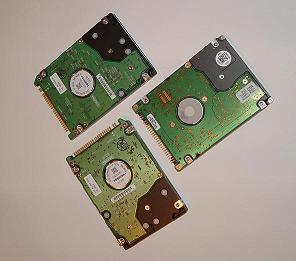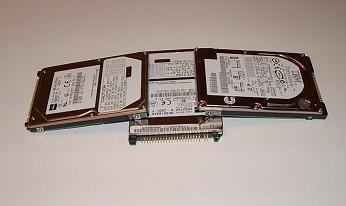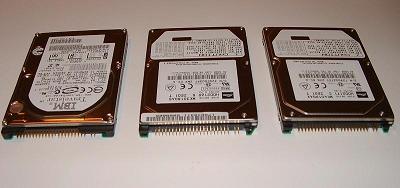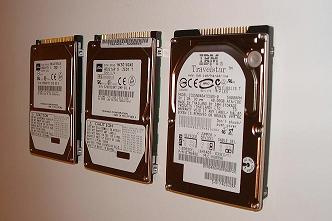 |
|
|
|
In the Forums... |

Posted: December 15th, 2002
Physical drive appearence tends to not vary from drive to drive and both IBM and Toshiba have packed their units within similar casing. Both drives are 9.5mm devices thus are thinner than older 5400rpm units of capacities 40GB and over, this also permits better air flow within the tight space found within most of today'snotebooks. The review samples we received share 80GB of storage space between them which formats down to 37.4GB for each drive respectively. The IBM Travelstar range is currently available up to 40GB but the Toshiba GAX series beats this with versions up to 60GB. Noise levels while in operation somewhat differ and the GNX series from IBM proves to be quieter with less of a sound impact on seek, read or write commands. The Toshiba is by far no loud device but one tends to notice it more and one or two may be put off by the very occasional "click sound" it produces. Heat production is widely under control thanks to the thiner 9.5mm casing leaving room for air flow when installed, during testing tempretures were only slightly higher than 4200rpm units which in effect will most possibly yield longer a life span. 


While Toshiba and IBM may not want to distinguish their drives by physical looks they certainly jump on the performance bandwagon in a different manner. What we find on the Toshiba is a massive 16MB buffer, IBM on the other hand prefers to stay with a now commonly IDE drive standard of 8MB. Solely doubling the buffer will not yield a substancial speed gain by itself, however it is applaudable to see such large buffers even if it is not guaranteed to improve performance. aerial density per platter is 34Gbits/sq.inch for the Travelstar GNX and 34.7Gbits/sq.inch for the GAX. These calculate to precisely 20GB of storage space on each platter, a step higher than previous generations and a reason why we can now squeeze 40GB into a drive only 9.5mm high. As a recap the higher the density the faster the operational speeds are as a result, this in effect closes the gap in bringing fast mobile storage solutions that much nearer to desktop hard drives. The common ATA/100 inteface is present on both devices as is FDB also know as Fluid Dynamic Bearings that aim to deliver richer acoustic levels set to stress our ears that little bit less. So far we have addressed these eaxct hard drives in particular, moving away slightly from technical speech it is worth noting that the Toshiba GAX series will be shipping in 60GB capacities, something that IBM denies happening to the GNX series, at least for now. 
|
||
|
| |||
|---|---|---|---|